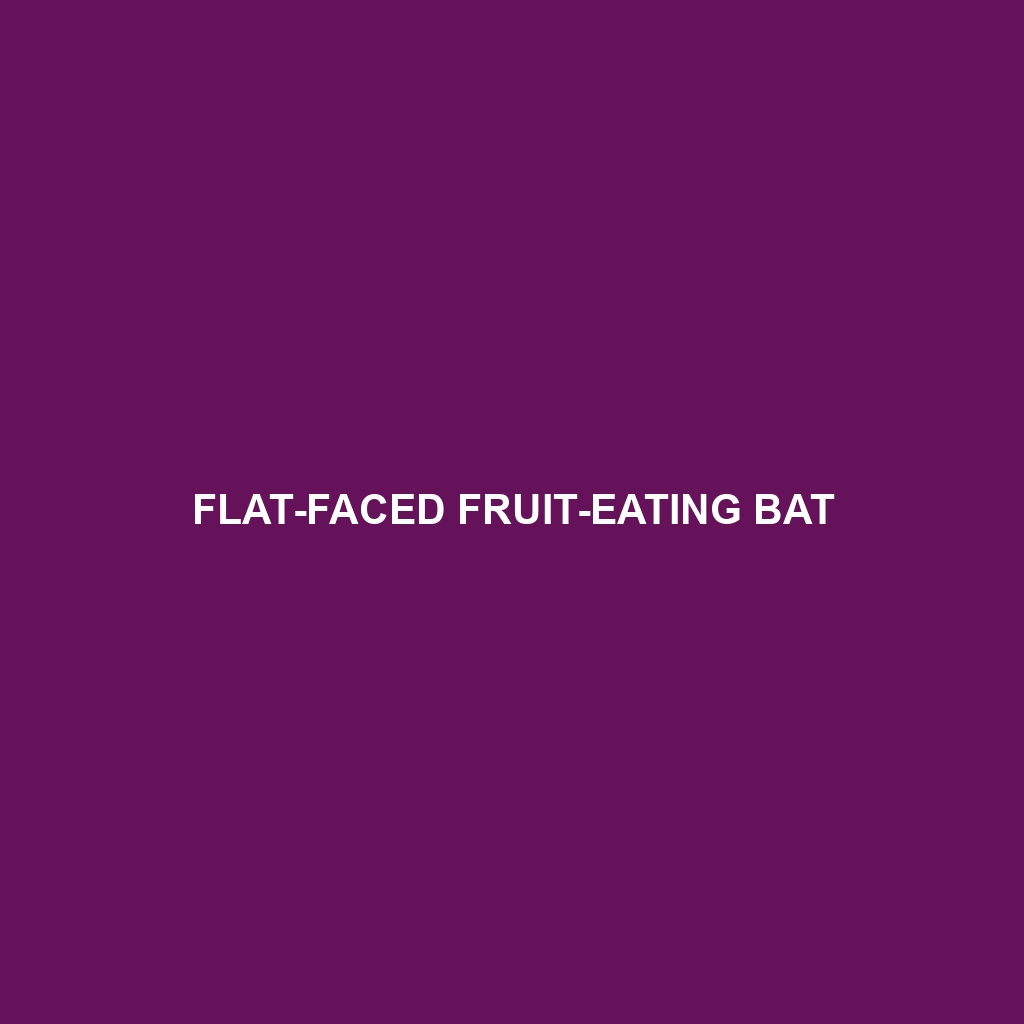Flat-faced Fruit-eating Bat
Common Name: Flat-faced Fruit-eating Bat
Scientific Name:
Habitat
The Flat-faced Fruit-eating Bat primarily resides in tropical and subtropical regions, including parts of Central and South America. Its preferred habitat includes dense rainforest areas and surrounding ecosystems where fruiting plants thrive. Common locations include the Amazon rainforest and other humid areas rich in biodiversity, essential for its survival and foraging needs.
Physical Characteristics
The Flat-faced Fruit-eating Bat features a distinctive flat face, which is a significant identifier among bat species. Typically, this bat weighs between 25 to 50 grams and has a wingspan of approximately 30 to 35 centimeters. Its fur is usually a mix of dark browns and tans, providing excellent camouflage against the foliage, while its broad, flat nose aids in its unique feeding habits. Noteworthy is its relatively large, rounded ears, which are finely tuned to detect the slightest sound, enabling it to navigate through its environment effectively.
Behavior
Flat-faced Fruit-eating Bats are primarily nocturnal, emerging at dusk to forage for food. They are known for their agile flying abilities, which allow them to maneuver through dense vegetation. Socially, these bats often roost in small groups, taking advantage of communal living for warmth and safety. Their foraging patterns are influenced by the blooming cycles of fruit trees, showcasing their dependence on surrounding flora for survival.
Diet
The diet of the Flat-faced Fruit-eating Bat consists mainly of fruits, with a strong preference for figs and soft, ripe berries. This frugivorous diet is crucial for seed dispersal, as the bats consume the fruit and excrete the seeds in different locations, promoting plant reproduction. Their feeding habits also contribute to the health of forest ecosystems by aiding in the growth of various plant species.
Reproduction
Breeding for the Flat-faced Fruit-eating Bat typically occurs during the warmer months, with a gestation period lasting around two to three months. Female bats usually give birth to a single offspring, which they nurture intensively. Young bats are dependent on their mothers for nutrition and protection during the initial weeks of life, gradually learning to forage on their own as they mature.
Conservation Status
Currently, the Flat-faced Fruit-eating Bat is classified as a vulnerable species due to habitat loss and degradation. Deforestation and urban development threaten its natural habitat, leading to a decline in its population. Conservation efforts are essential to protect its remaining habitats and ensure the survival of this unique bat species.
Interesting Facts
One fascinating aspect of the Flat-faced Fruit-eating Bat is its exceptional adaptability to changing environments. Studies have shown that these bats can modify their foraging strategies based on the availability of fruit, making them a resilient species in the face of environmental changes. Additionally, their flat face not only aids in feeding but also serves an essential role in social signaling among bats.
Role in Ecosystem
The Flat-faced Fruit-eating Bat plays a vital role in its ecosystem as a pollinator and seed disperser. By consuming fruits and dispersing seeds over wide areas, these bats contribute significantly to the regeneration of tropical forests and the overall health of their habitats. Their interactions with various plant species underscore their importance in maintaining ecological balance.
